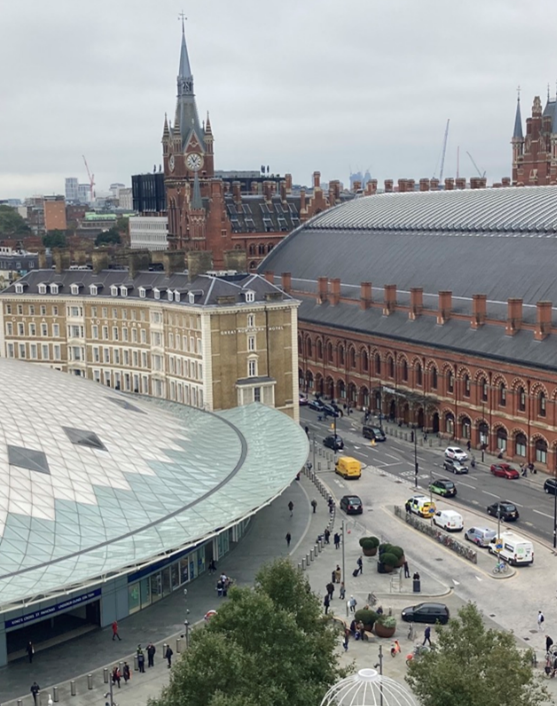An Ode to Kings Cross and St Pancras Stations: from Grain to Google

by Vince Wall
As you may (or may not) be aware, Urbanissta is based out of Kings Cross. It’s a great area that offers something for almost everyone, it’s got boozy pubs and glamorous bars, vegan restaurants and steak houses with thick burgers. To the front are the many platforms which offer journeys and escapes to Scotland, France, Holland and numerous destinations North of the M25. The glorious St Pancras hotel clock tower stands erect, overlooking the area in a dominant and unrivaled position. Let’s be honest, it’s much cooler than Big Ben! In contrast to the maturity and heritage of the clock tower, is the renovated Kings Cross building. The domed building design looks incredible from inside, like a giant white metal web. From the outside and viewed from above, I think it looks like a crashed UFO. In terms of the layout of the station’s public area, Kings Cross Station is rounder, with exits in all directions. St Pancras seems to be more linear and long, working across multiple levels, with trains departing and arriving up top.

To the rear is the expansive Coal Drops Yard area and Granary Square. It has become an iconic space for Londoners, serving as a great meeting point. It is also representing one of the most elusive but sought out things in London: a public square. Plus, it’s not a glorified roundabout, like Trafalgar Square. In fact, there aren’t even any cars, but there are public toilets, fountains, a Waitrose and lots of seating straddling the Regents Canal. As well as being a place for leisure, Kings Cross also serves as a home for many quality office buildings. Universal, the Guardian and Google all have major bases here.
The origins of Kings Cross and St Pancras, as we know it today, goes back a few centuries. Due to the close proximity to the Regents Canal and as well as central London, the Great Northern Railway and the Midland Railway company decided to set up shop here in the mid-19th Century.
Vital goods such as grain and coal were transported into the stations, and for many years the stations would have served as arteries for the capital’s economy and populace. But by the 1860s, the Midland Railway company decided that they needed a Central London passenger terminus and decided to build a St Pancras Station for use by the general public. The Metropolitan Railway, the world’s first underground railway, was built in the 1860’s and passed through the stations.
The original Kings Cross station was designed by Lewis Cubitt around 1851-52. The St Pancras passenger station was designed by William Henry Barlow, and the hotel was designed by George Gilbert Scott (who entered, and won, a design competition for the hotel).
Following the second world war, the area became what’s best described as “dodgy”, with lots of Ne’er-do-well’s frequenting the area. But by the 1990’s, plans were made to transform the area, with High-Speed Rail 1 at the heart of it. In 2007, Eurostar moved to St Pancras Station and the area hasn’t looked back since, with an investment of over £2.5 billion on transport infrastructure alone. Google’s gargantuan office is currently being developed, and once opened it looks like it will be a real special building (watch this if you don’t believe me: https://www.youtube.com/watch?v=Gq-ra9cwKeY)

Figure 2 The new Google building under development.
However, this isn’t the first time Kings Cross, and St Pancras have tried an image change. Way back in the 1830’s before the railway stations existed, the area was polluted with industrial goods coming in on the Regents Canal. In order to make the area seem more appealing and regal, a statue of King George IV was built on a crossroads next to the area. The statue didn’t last long and was demolished in the 1840’s, however the new name associated with the king and the crossroads stuck, hence why we have ‘Kings Cross’. Rather less fun is how St Pancras got its name, being named after a 14-year-old boy, and subsequent Saint, who was murdered by the ancient Romans.
So that’s it! Kings Cross is a great area! If you want to know more about the Kings Cross area then I suggest hopping on the tube, train, bike or boat and going down there yourself. If you’re not quite convinced then here is another article to persuade you: https://www.independent.co.uk/travel/48-hours-in/kings-cross-london-things-to-do-city-guide-b1933297.html
For more history see this website: https://www.kingscross.co.uk/history-kings-cross-area





